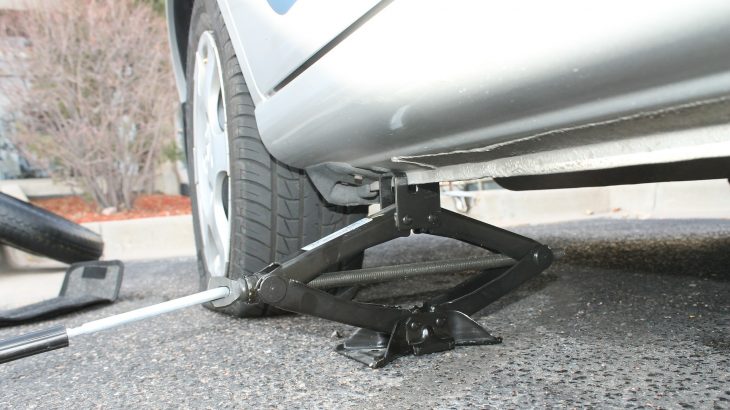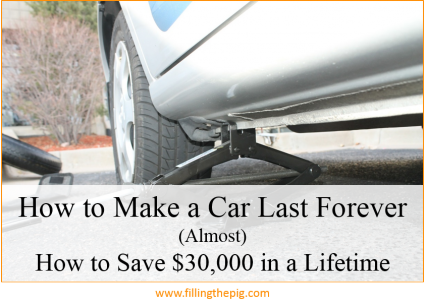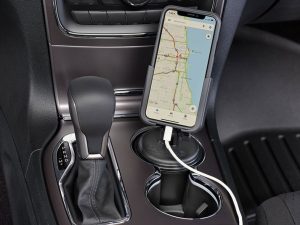My dad was an engineer for over 40 years. And like most engineers, his perspective when it came to building, fixing, or maintaining anything was to do it himself. Growing up, I watched him maintain the family vehicles, everything from minor maintenance to major repair work. He understood how to make a car last forever (almost), and that a vehicle was the worst investment you’ll ever make.
So naturally, as I purchased my vehicles, I took on the same perspective. Performing regular maintenance to make my vehicles last as long as I possibly could. Over time, and with some practice, I learned that I could easily make my vehicles last longer. Today, I don’t consider purchasing another vehicle until my car is at least ten years old and has a minimum of 200,000 miles on it.
Performing proactive maintenance on your vehicle keeps small repairs from becoming expensive ones. Maintaining and making your car last as long as possible is one of the best ways to save money throughout a lifetime. In fact, if you were to purchase one less vehicle in a lifetime you could save $30,000.
Maintenance on your vehicle isn’t just for do-it-yourselfers; it’s for anyone that wants to make their vehicle last as long as possible and save a whole bunch of money. Whether you’re a do-it-yourselfer or just want to learn how to make your car last forever, here are seven things I have learned about vehicle maintenance and how you can make your car last longer.
First Things First, Why Make Your Car Last Longer?
You already know that a car is a major expense. In fact, for most a vehicle purchase will be the second major lifetime expense next to owning a home. Regardless of whether you buy new or used. There are three main reasons to maintain and keep your vehicle as long as you possibly can.
#1 They’re Expensive to Purchase. In a lifetime and on average Americans will own 6-7 vehicles. With new car prices averaging $30,000 each time you purchase a vehicle, it’s a significant chunk of change. Even buying used vehicles is an expensive proposition. The longer you can keep your vehicle, the fewer vehicles you need in a lifetime. Fewer vehicles mean saving more money.
#2 Expensive to Operate: All vehicles need maintenance, gas, windshield wiper fluid, new tires, and a periodic wash. It’s not enough that a car is expensive to purchase, but keeping them in reliable working order is a costly venture. Proactive maintenance allows you to identify minor issues before they become a major expense.
#3 A Car is Not an Asset. This is the most important one. Car lovers won’t like me saying this, but a vehicle is the worst investment you will make in your lifetime. Unlike a home, company stock or mutual fund, which increases in value over time, a vehicle never increases in value. From the time you purchase your vehicle, the vehicle loses value every year you own it. It depreciates. Making it last as long as possible is the only way to have it provide any value at all.
How to Make Your Car Last Forever – Almost
#1. Change the Oil as Scheduled
The human body is approximately 60% water. One of the benefits of water to the human body is that it lubricates your joints and minimizes friction. Oil for your car’s engine is like water to the human body.
Dirty oil increases the friction between key components in your vehicle. Over time this friction creates wear and tear on the engines ability to function properly. And decreases reliability.
There is no single maintenance practice that can extend the life of your vehicle more than changing the oil as scheduled. In the old days changing the oil was recommended every 3,000 miles. Today, newer cars and trucks have an oil sensing monitor that will notify you when the oil needs to be changed.
Change your oil and oil filter regularly to extend the life of your car. In between oil changes, check to make sure your oil is at the recommended operating level. It’s one way to make a car last forever.
DIY Tip: The average cost of an oil change is $20-$50. If you can change the oil yourself, you will save about 25% on the cost. That may not sound like much but consider how often you may need to change your oil annually. And consider how often an oil change will be needed in a lifetime. If your adventurous and want to give it a try, here is a step-by-step short video from Edmunds on how to change your oil.
#2 Change Your Engines Air Filter
Could you imagine running a marathon with a piece of duct tape covering your mouth? Only being able to breathe through your nose. It would be pretty hard to breathe, and before you reached the finish line, you would be exhausted due to lack of air.
A clogged or dirty air filter has the same effect on your engine. Dirty air filters reduce fuel economy and force your engine to work harder. A clean air filter keeps your vehicle running efficiently and keeps dust and foreign particles out of your engine.
I change my air filter once a year. However, if you drive on gravel roads or drive a lot, you may need to change it more frequently.
DIY Tip: Air filters are relatively easy to change and inexpensive to purchase. You can purchase air filters at your local auto parts store or on Amazon. How cheap are they? Here is an example of the air filter I use in my truck.
#3 Change Your Brake Pads as Soon As Needed
Being able to stop is a really good reason to have your brake pads or brake shoes replaced. However, another reason that most people are not aware of is the damage that can be done if you don’t. Worn brake pads/shoes will eventually damage the rotors or drums on your vehicle. The rotors/drums are the part of the vehicle that the brake pads utilize to create friction so you can stop.
If you’re hearing a squeaking or scraping sound each time you apply your brakes, then your brake pads/shoes need to be changed ASAP. Don’t wait to replace your brake pads/shoes. As you rack up more miles on your vehicle it will only increase the chances of you damaging your rotors or drums, which will cost you more money in the long run.
DIY Tip: Replacing your brake pads isn’t for everyone. However, it is the one area of vehicle maintenance where you can save the most money. And similar to oil and air filters, you will need this done more than once over the lifetime of your vehicle. The average cost of a front-end brake job is @$450. The actual cost of the brake pads is @$50. For example, here’s how much brake pads cost for a Toyota Camry. Imagine being able to replace your own brake pads, and how much you could save.
#4 Fluids – Engine Coolant, Transmission and Brake Fluids
Engine coolant is used to keep your engine running at its optimal temperature to avoid overheating. Transmission fluid lubricates the key components of your car’s transmission so you can move forward or backward. Brake fluid provides the necessary pressure to your brakes when you step on the brake pedal.
All of these fluids are critical to each component of your vehicles operating system. At a minimum check the fluid levels for each reservoir when you have your oil changed. To make sure the fluid is at the correct level.
There are different recommendations on when you should have these fluids changed. For some vehicles, the recommendation may be never – unless you have an issue. I change my transmission fluid at @100,000 miles. Coolant and brake fluid only get changed if I have an issue with the specific system.
DIY Tip: Most important, check your fluids regularly to make sure they are at the proper operating level. To learn how, watch this short video from Cars.com – A Guide to Your Cars Fluids.
#5 Tires
If you’re going to make your car last 200,000+ miles, you’re going to be purchasing new tires.
Tires are expensive, and you want them to last as long as possible. The way to keep them in the best shape is to make sure your tires are properly inflated. Overinflated or underinflated tires increase wear. This leads to loss of tread life, which leads to poor handling. Check your tire pressure a couple of times per year to make sure they are properly inflated.
Another aspect of tire maintenance is your vehicles front-end alignment. When your car is aligned properly, your front tires will wear evenly. When out of alignment, your vehicle will tend to veer to the left or right. A car that is out of alignment will cause the front tires to wear more quickly. If your vehicle is “pulling” or veering to the right or left, have your vehicle re-aligned at the local shop. Front-end alignment isn’t something you can do on your own.
DIY Tip: Use a tire gauge to check the air pressure regularly or as needed. This is the tire gauge I recommend. Rotate your tires once a year to minimize uneven tire wear. If you need new tires, shop around. Online retailers like TireBuyer.com are always offering discounts on name brand tires.
WeatherTech CupFone -Universal Adjustable Portable Cup Holder Car Mount for Cell Phones
#6 The Shiny Object Effect – Interior and Exterior Car Care
I call it the “shiny object effect.” It’s the perspective that the things we have look less and less appealing as they age. When our jeans fade and shrink from multiple washings, we buy a new pair of jeans. Scuffed or worn out shoes, order another pair from Amazon. The shiny object effect says if what I have is old, I need something new.
We all like the look and feel of a new vehicle; to some degree, it’s considered a status symbol. However, purchasing a new car because it looks old, but still runs great doesn’t make a lot of sense. The way to avoid the shiny object effect and make your car last forever is to keep your car looking great even when it reaches 200,000 miles.
Exterior car care is as simple as waxing your vehicle once a year, and washing it periodically when it’s needed. Waxing and washing keep your vehicle from rusting prematurely.
Interior car care is about floor mats that protect the carpet, vacuuming and cleaning the interior, and keeping your car looking as new as possible.
Does keeping the interior and exterior parts of your car looking great make your car last forever? Probably not, the mechanical aspects are more important. However, as your vehicle ages, a great looking car will keep you from considering the purchase of a new vehicle simply because it’s the newest shiny object.
DIY Tip: Wax your car once a year. I recommend Nufinish. By far the best, once a year car wax I have ever used.
#7 Pay Attention – Look, Listen, Smell
Everyone knows that after you have driven your vehicle for a year or so you get very familiar with how it drives. What sounds it makes and even how it smells. And when something isn’t just right, you’re likely to notice it right away. The key is doing something about it once you recognize something is wrong.
For example:
- You notice your car is “pulling” to the right slightly. This could be a sign your front-end alignment is out of whack. A front-end out of alignment will eventually damage the front tires on your vehicle.
- A screeching sound coming from the engine could be a bad belt or a bad bearing in your air conditioner or alternator.
- You see drip spots on the floor as you back your car out of the garage. This could be due to a leaky seal from your transmission or a crack in your radiator.
All of these things are indications that something is wrong. In all the years I have maintained my vehicles, the one thing I have learned is that if something doesn’t seem right, it probably isn’t. And if you don’t address the issue right away, it inevitably leads to a more expensive repair bill.
It’s not important that you understand what is wrong, only that something is wrong and requires further attention. Don’t wait until you have to call for roadside assistance. Being proactive will help you make your car last forever.
DIY Tip: When you have your oil changed, it’s the perfect opportunity to check fluids, tires, and brakes. And to identify if other things look, sound or smell different since your last oil change. Being alert and aware will help you make your car last longer.
Finally – How to Make a Car Last Forever (almost)
Owning a vehicle is no doubt a necessity and a convenience. There is no way most of us could ever live without one. Even if they are the worst investment you will ever make. However, if one of your financial goals is to save money – cash, then making your car last as long as possible is the way to do it. And most importantly, it’s a cash-saving strategy you can use the rest of your life.
Making your car last forever (almost) could save $30,000 in a lifetime.
Recommended Resources:
- Auto Repair for Dummies, by Deanna Seclar
- TireBuyer Discounts on Tires – Buy online and save.
- Advance Auto Parts – Thousands of Auto Parts Online
Do you have a DIY tip that will make a car last forever? Comment below.
Sign up for a Kindle Unlimited Free 30 Day Trial and read the complete Filling The Pig finance series of books for free.




Everyone should be aware of the basic aspects of car maintenance which might influence the performance of the vehicle. Lack of regular maintenance is solely responsible for the appearance of different types of health-related deformities. So, the condition of different components of the vehicle should be subjected to inspection and any signs which indicate that certain components have malfunctions should not be ignored. The reason behind the appearance of such a sign needs to be identified and repaired immediately to keep the vehicle in working order.